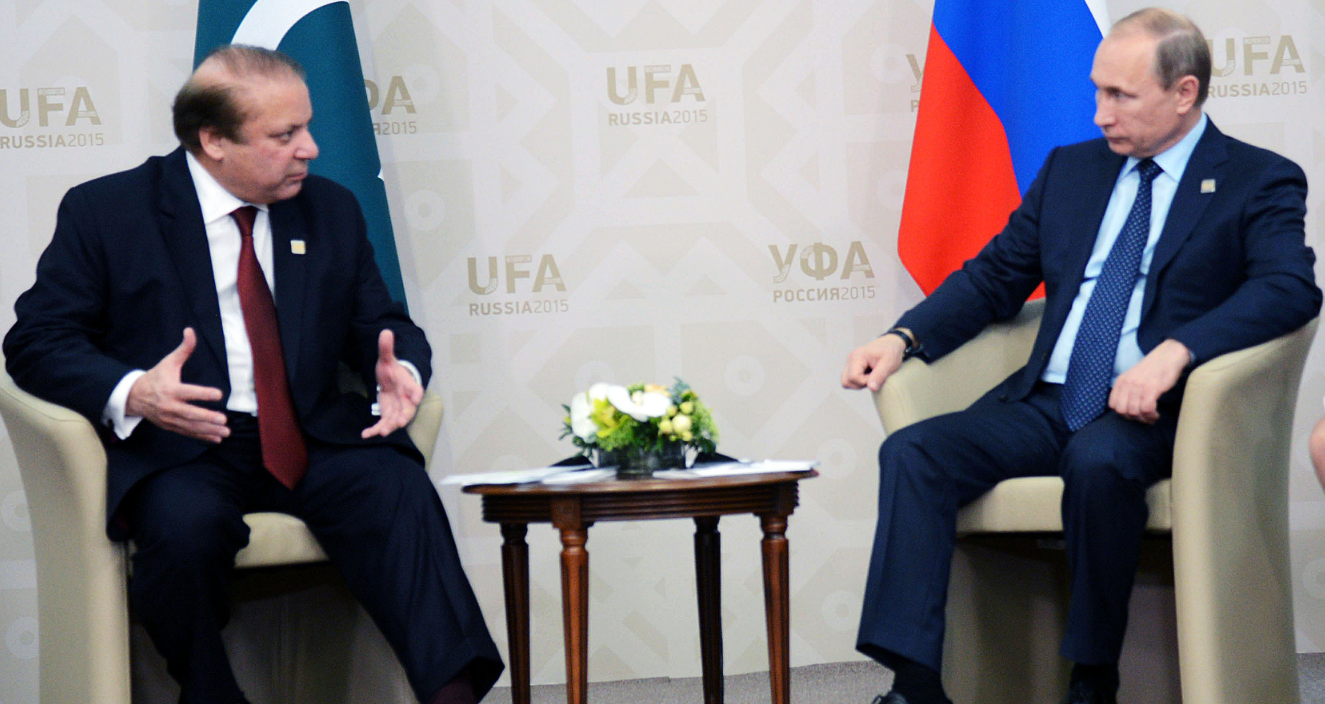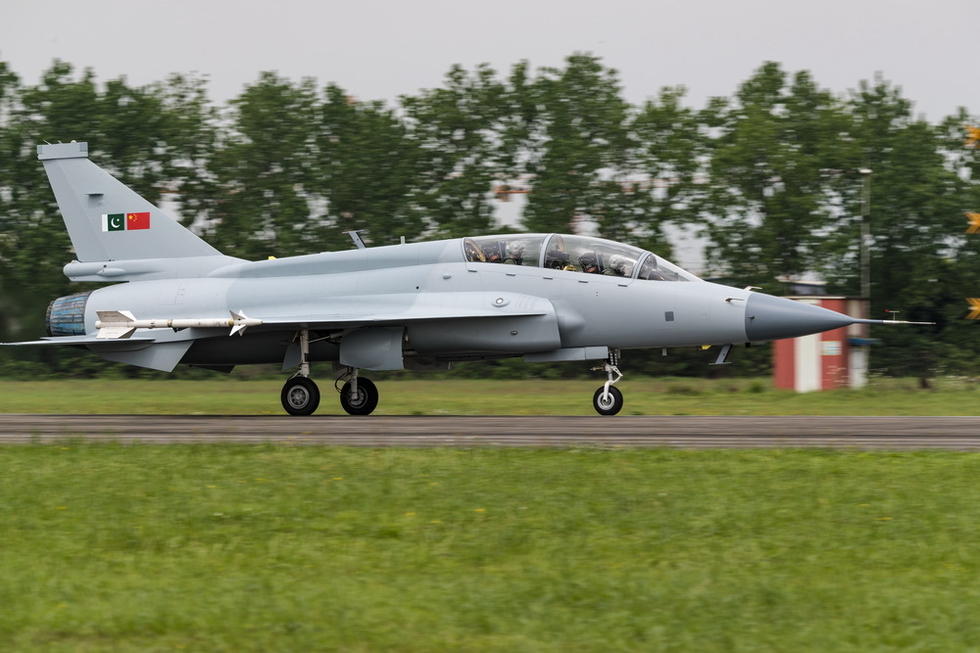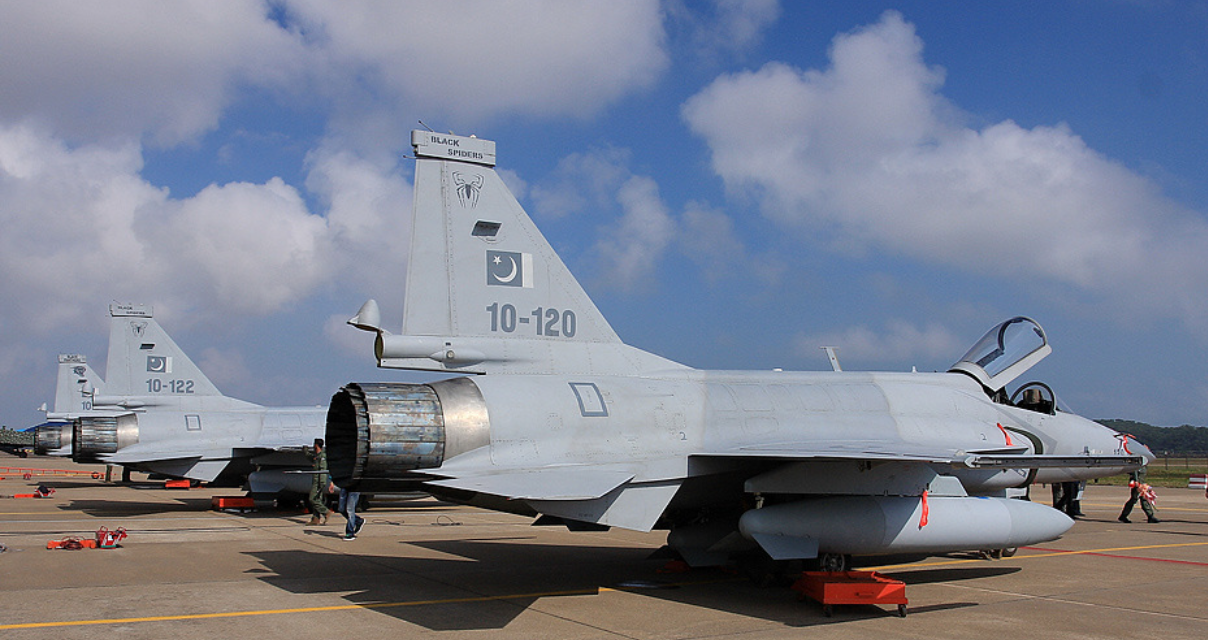22Views 24Comments

This Week in Review: Understanding Russian-Pakistani Defence Ties
Every weekend, Quwa will close the week’s news with a review and analysis with the aim to tie together several topics into broader themes. It is an opportunity to reflect upon and discuss issues in a way where key trends are identified and individual news topics are connected into a “bigger picture.”
Understanding Russian-Pakistani Defence Ties
There has been a visible uptick of attention on the question of Pakistan’s defence ties with Russia, and the Sukhoi Su-35 is at the epicentre of it. Talk of the Pakistan Air Force (PAF)’s supposed interest in the Su-35 has been circulating for a year, but over the past week, several Russian media outlets have apparently drawn confirmation of the subject from high-level Pakistani officials.
Major General Naveed Ahmad, head of Pakistan’s Directorate General of Defence Purchase (DGDP), was quoted by RIA Novosti saying: “We analyze this (Su-35 – Ed.). We expressed an interest, right now it is up to the Russian side, the negotiations have progressed further it will take some time.”
If the DGDP’s statements to RIA Novosti are accurate, then this would mark the first official and verifiable Pakistani statement on the Su-35. Furthermore, it would lend credence to the idea that the PAF is seeking another fighter platform in addition to the JF-17, F-16 and its next-generation program. Of course, even the DGDP cautioned that while Pakistan has expressed interest in the fighter, the decision to progress to the next step is, ultimately, with Russia.
A fighter aircraft sale to Pakistan – especially of the Su-35 – would be unprecedented and significant. Such a sale would mark the first instance of Russia transferring a weapon system that could tilt the conventional balance between India and Pakistan in the latter’s favour. Granted, a sale of two or even three squadrons would alter the balance, but it would imbue the PAF with range, payload and coverage capabilities it does not currently enjoy with its present fleet, which is comprised of light and medium-weight fighter aircraft.
However, in light of Moscow’s strong and longstanding defence ties with New Delhi, the notion that it would approve of a Su-35 sale to Pakistan – especially at this time – is difficult to envision. Interestingly, this is not the first time Moscow and Islamabad had gotten on relatively close grounds on fighter aircraft. In the late 1960s, the Soviet Union had begun selling arms to Pakistan, and at the time it was believed that Moscow was interested in selling fighter aircraft to the PAF. In the 1990s, the PAF had expressed interest in the Sukhoi Su-27 and Mikoyan MiG-29. Despite the buzz, no fighter sale had been secured.
Interestingly, in both instances, the apparent progression in ties between the PAF and the Russian defence industry was in the aftermath of U.S. sanctions on Pakistan. With the U.S. being a traditional supplier of high-tech qualitative drivers (such as the F-16 and its various subsystems) for its fleet, sanctions have had an acutely severe impact on the PAF. The 1990s had a particularly negative impact in setting the PAF back. However, the situation today is not one of U.S. sanctions, but that of American reluctance to bankroll the Pakistani military’s conventional defence aspirations. Whatever the cause (and there are many to list), the idea that Pakistan could continue sourcing high-tech military equipment from the U.S. is not realistic.
As a result, Russia is viewed as an alternative. In fact, in addition to the Su-35, the DGDP also listed Russian tanks, anti-tank missiles, and air defence systems are areas of interest to Pakistan. From these statements, it is evident that Pakistan is broadly interested in the idea of procuring Russian arms, and the notion that it could express interest in such things is an indication that Moscow is relatively open to the prospect. In fact, the DGDP was hopeful that a deal for RD-93 turbofans (for use on the JF-17) would be signed soon, and the PAF, as well as Pakistan Aeronautical Complex (PAC), are interested in broadening the scope of the RD-93 (via a maintenance, repair, and overhaul centre as well as possibly the RD-33MK).
It would be disingenuous to argue that Russia would not transfer sophisticated arms to Pakistan. In some respects, such as the Pakistan Army, the market is certainly worth pursuing in that there is demand for utility helicopters, attack helicopters, armoured vehicles (or armour expertise), small arms, and munitions (e.g. anti-tank missiles). In other words, a vendor will profit.
Moscow likely understood this in 2015 when it broadly agreed to sell arms to Pakistan, and as such, it is probably hopeful of landing a big-ticket sale of some kind, such as the Mi-28NE. Russian officials were reportedly supportive of the idea of selling Mi-28NE attack helicopters to Pakistan. According to IHS Jane’s, Moscow framed its interest from the angle of supporting Pakistan’s counterinsurgency (COIN) efforts (apparently in a bid to cool sensitivities from New Delhi). One could comfortably wager that tanks and/or armour technology could be on the cards, especially considering the Army’s quantitative scale.
With the possible exception of security issues affecting Central Asia, Pakistan’s COIN and counterterrorism efforts are of limited direct relevance to Moscow. Ultimately, Moscow’s interest to sell the Mi-28NE (and in time other arms) stems from its commercial defence interests, not strategic interests or alliances. The country has limited interest in matters that do not concern its immediate frontiers. At this stage, Pakistan is neither a threat or an asset. Rather, it is a viable market for arms. As a result, Russia’s enthusiasm will be gauged on the basis of the weapon system that is of interest to Pakistan.
The Su-35 will draw India’s ire, and if New Delhi cannot leverage its existing contracts, there is little to stop it from proposing new lucrative areas to Russia as a means to nix such a sale. In fact, even if the PAF succeeds in securing the Su-35, who is to guarantee that India will not tirelessly work to cut the PAF’s access to that fighter’s supply chain? If viewed differently, what if Russia decides to beset the PAF with a requirement to buy Russian munitions along with the Su-35, especially in areas where the PAF already has access to comparable solutions, such as precision-guided bombs? If it is going to sustain India’s ire, Russia has every incentive to vertically integrate and milk a Pakistani order in its entirety.
On the other hand, there is a unique aspect to Pakistan’s ties with Russia – China. Through the decades, the Chinese have essentially been Pakistan’s conduit for accessing Russian military technology. Earlier examples include the F-6 (MiG-19), F-7 (MiG-21) and T-59 tank (derived from the T-55). In recent times, the Chinese have been a critical agent in securing essential Russian support, such as the RD-93 turbofan for the JF-17. How this relationship with translate in terms of the Flanker series is, at this stage, a matter of creative speculation. However, there is little India could do to stop Pakistan from benefitting from a joint-program or initiative between Russia and China, or a Chinese program that requires Russian support.
Despite the uncertainty in the Su-35, there may be substantive areas of development in the pipeline, most notably in relation with the JF-17. In addition to bringing the RD-93’s MRO infrastructure to PAC, the PAF has (via IHS Jane’s) interested in the idea of using the much-improved RD-33MK on the JF-17. While this idea is likely in the context of possible variants after the forthcoming JF-17 Block-III, the introduction of a turbofan would have fleet-wide benefits for the PAF (since the JF-17 is the emerging backbone fighter).
In terms of other direct procurements from Russia, Pakistan’s main enabler rests in its economy. As long as its future economic prospects remain unsure or below potential, it will be difficult for the country’s military planners to be liberal or ambitious with their ideas.


